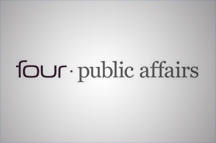It’s been a busy bank holiday weekend for lockdown news in the UK. The formal lockdown was extended by Dominic Raab on Thursday evening, and Boris Johnson addressed the nation on potential changes to lockdown rules on Sunday night. However, the general response to a weekend of government messaging appears to be confusion and hesitancy, with people unsure of what the new guidance actually means. With that in mind, here are four things to know about the UK’s exit strategy.
Things have changed…or have they?
It’s fair to say that number 10 loves a slogan. True to form, the focus of this weekend’s political coverage was the government’s new message of ‘stay alert, control the virus, and save lives’, prompting some confusion about what staying alert actually means. The waters were muddied further by communities secretary Robert Jenrick telling Andrew Marr, ‘Stay alert will mean stay alert by staying home as much as possible, but stay alert when you do go out, by maintaining social distancing, washing your hands, respecting others’. This appears to be the same guidance the government has been giving people since lockdown started.
During his Sunday address, Johnson clarified that the guidance means that people can leave the house more than once a day for exercise and those who cannot work from home should be encouraged to go to work. However much like the slogan, the detail behind the guidance is not as new as it first appears. The government never introduced any formal regulations about how many times people could go out for exercise, and many parks have continued to allow people to sit as long as they observe social distancing. Similarly, the government did not tell manufacturing or construction companies to shut down, businesses simply made the decision to take advantage of the furlough scheme instead. The government’s choice to focus on these tweaks to the guidance could be seen as an effort to distract from the fact that its long-term roadmap for getting the country out of lockdown, which Johnson also announced yesterday, is as vague as its new slogan.
If, buts and maybes
Yesterday, the prime minister presented his timeline for lifting restrictions for the first time since the lockdown was announced. Johnson struck an uncharacteristically cautious tone during last night’s conference, couching every statement about lifting restrictions in caveats about following the science and monitoring the impact each change has on transmission rates. While the timeline the prime minister set out was very top line, the strategy has already received significant pushback from those questioning how realistic it is.
The government’s aim to have some hospitality and public venues open in July is the most ambitious target, with restaurants and cafes in less affected countries remaining closed for the foreseeable future. With the R-value currently being estimated at somewhere between 0.5-0.9, there is very little room for error or ambiguity in the guidance. Additionally, lifting the lockdown measures will depend on the government’s ability to limit the number of new cases, meaning that without an effective track and trace programme in place, any significant easing of lockdown restrictions will risk a second peak.
Devolved nations go their own way
Throughout the COVID-19 crisis Boris Johnson has been quick to emphasise that he wants to take a UK-wide approach to tackling this virus, with the whole country acting ‘in lockstep’. That memo clearly didn’t reach the offices of Mark Drakeford or Nicola Sturgeon, who both continue to diverge from Westminster’s messaging. Sturgeon, who has been heavily critical of the UK government’s response for weeks, tore into number 10’s new slogan during her press conference and made it clear that Scotland will not necessarily follow Johnson’s new exit strategy.
The devolved nations’ reluctance to move away from clear stay at home message is unsurprising given that the R-value is thought to be closer to one in Wales, Scotland and Northern Ireland than it is in England. However, despite the rhetoric, Scotland and Wales have also both confirmed they are relaxing their lockdowns in a similar way to England, meaning the differences between the nations’ strategies may be more about messaging rather than policy. This could still pose a risk to Johnson politically though, as the conflicting messages from his counterparts in Scotland and Wales expose him to further criticism about England’s more vague and confusing communications strategy.
Finally, some scrutiny?
The last couple of weeks have seen a rocky return for the prime minister and things are unlikely to get any easier this week. This afternoon the government will release a 50-page blueprint for easing restrictions, a document that will be pored over by opposition parties to find inconsistencies and loopholes that can be used to attack Johnson. Dominic Raab will also be in the hot seat this afternoon as he presents more details of the government’s quarantine plans to the Commons, and tomorrow Rishi Sunak will be announcing the government’s decision about the future of the furlough scheme and its strategy to prevent mass redundancies.
Johnson will be vulnerable to criticism on all fronts this afternoon when he addresses the house, and is likely to face hard-to-answer questions about PPE shortages, the NHS track and trace app, and the escalating crisis in care homes. The prime minister could also face attacks from his own party as a growing number of backbench Tories push for the lockdown to be eased faster to help the economy recover. Another problem presented itself during last week’s PMQs, as Labour’s new leader Keir Starmer put in a solid performance, pressing Johnson on a number of issues where he did not appear to have a clear answer. As people’s patience with the lockdown wears thin, it’s unlikely that the government’s slogan first, details later approach will be sustainable for much longer.












